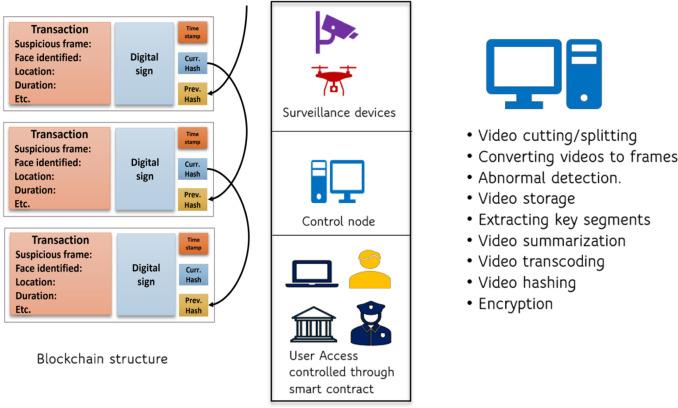How Blockchain Revolutionizes Verifying qualifications: secure and Transparent solutions
Verifying qualifications has long been a challenge for educational institutions, employers, and professionals alike. With rampant cases of resume fraud, falsified degrees, and complex manual verification systems, the need for a secure and transparent verification solution is more important than ever. Enter blockchain technology—a transformative tool that is rapidly revolutionizing how we verify academic and professional credentials. This article explores how blockchain creates secure, transparent, and efficient solutions for qualification verification, shedding light on its growing adoption worldwide.
Understanding the Conventional Challenges in Qualification Verification
- Inefficiency: Manual processes, paper-based certificates, and cross-border verification frequently lead to delays.
- Fraud and Forgeries: Counterfeit diplomas and embellished credentials are hard to detect and increasingly sophisticated.
- Lack of Openness: Stakeholders, such as employers and recruiters, often struggle to trace the authenticity of documents.
- data Privacy Concerns: Reliance on insecure databases and data sharing risks exposing sensitive personal information.
Thes hurdles hamper the hiring process,diminish trust in academic institutions,and undermine global workforce mobility.That’s where blockchain-based verification steps in as a game-changer.
How Blockchain Secures and Transforms Qualification Verification
Blockchain technology serves as a decentralized, immutable ledger. When applied to credential verification, it records each qualification as a unique, cryptographically secure digital asset—making tampering nearly impossible.Here’s how blockchain revolutionizes the verification of qualifications:
1. Immutability and Verifiability
- Each qualification, diploma, or certificate is registered on the blockchain with a unique digital signature.
- Records cannot be altered or deleted, ensuring long-term credibility.
- Verification is simple and instantaneous—with just a hash or QR code, anyone with permission can check authenticity.
2. Decentralization and Trust
- No single entity controls the blockchain—reducing risks of partiality or corruption.
- Credentials can be verified globally, 24/7, without intermediaries or manual intervention.
- Builds trust between institutions, employers, and candidates in the qualification process.
3. Privacy and Data Security
- Only essential validation data is stored on the blockchain—protecting personal information.
- Candidates have control over who can access or share their credentials.
Benefits of Using Blockchain for Qualification Verification
- Protects against Fraud: Falsifying digital blockchain credentials is nearly impossible due to cryptographic security.
- Speeds Up Hiring: Instant verification enables recruiters and HR teams to make faster, data-driven decisions.
- Empowers Individuals: Professionals can manage and share their credentials as needed, supporting lifelong learning and career progression.
- Global Accessibility: cross-border credential recognition is simplified, promoting international mobility of talent.
- Reduces Costs: Automated processes minimize manual labor and administrative overhead for educational institutions and employers.
- Interoperability: Blockchain-based standards enable seamless credential sharing between different systems and organizations.
Case Studies: Blockchain Credential Verification in Action
MIT’s Digital Diplomas
The Massachusetts Institute of Technology (MIT) was among the pioneers to issue blockchain-based diplomas. In 2017, graduates received both a traditional paper diploma and a digital credential stored on the blockchain. Employers could scan a QR code on the digital version to instantly verify its authenticity—effectively eliminating the risk of diploma fraud and simplifying the recruitment process.
sony Global Education and IBM
In partnership with IBM,sony global Education developed an educational platform using blockchain,where students’ learning progress and credentials are securely stored and shared across institutions. This solution supports lifelong learning and upskilling by providing a portable, immutable digital portfolio.
DIF Blockchain Initiative in Dubai
Dubai International Financial Center (DIFC) implemented a blockchain-powered Certificate Verification System. Over 2,000 certificates have been securely issued and verified, reducing fraud and improving efficiency in the city’s financial sector.
Practical Tips for Leveraging Blockchain in Qualification Verification
- Partner with Blockchain-Driven Platforms: Educational institutions and businesses should collaborate with established blockchain credential providers, such as Blockcerts or Learning Machine.
- Standardize credential Formats: Embrace common frameworks and standards to ensure interoperability and easy adoption across sectors.
- Educate stakeholders: Conduct awareness campaigns for students,professionals,and recruiters to highlight the security and benefits of blockchain credentials.
- Integrate with HR and Recruiting systems: Use APIs and plug-ins to connect blockchain verification with existing HR tools, streamlining hiring processes.
- Prioritize Privacy Compliance: Ensure data governance and compliance with regulations like GDPR when implementing blockchain solutions.
Limitations and Considerations
While blockchain offers considerable advantages in credential verification, it’s crucial to acknowledge certain challenges:
- Adoption barriers: Integration into legacy systems and widespread stakeholder adoption can be gradual.
- Technical expertise: Implementation requires understanding blockchain infrastructure and security best practices.
- Regulatory Landscape: Privacy laws and regulations must be carefully navigated, especially in cross-border scenarios.
- Cost and Scalability: Solution costs and scalability depend on the blockchain used (public vs. private, permissioned vs. permissionless).
Continuous innovation and cross-industry collaboration are key to addressing these concerns and realizing blockchain’s vast potential in the qualification verification space.
Conclusion: The Future of Secure and Transparent Qualification Verification
In a digital-first world where trust, efficiency, and security are paramount, blockchain technology is reshaping the way qualifications are verified. By enabling immutable records,automated verification,and global accessibility,blockchain delivers a fraud-resistant,user-centric approach suited for the needs of modern education and workforce ecosystems.
As adoption grows and technology matures, blockchain-backed qualification verification systems are poised to become the gold standard for institutions, employers, and professionals worldwide. Embracing this innovation is not just about staying ahead—it’s about building a framework of trust, transparency, and empowerment for the future of learning and careers.

